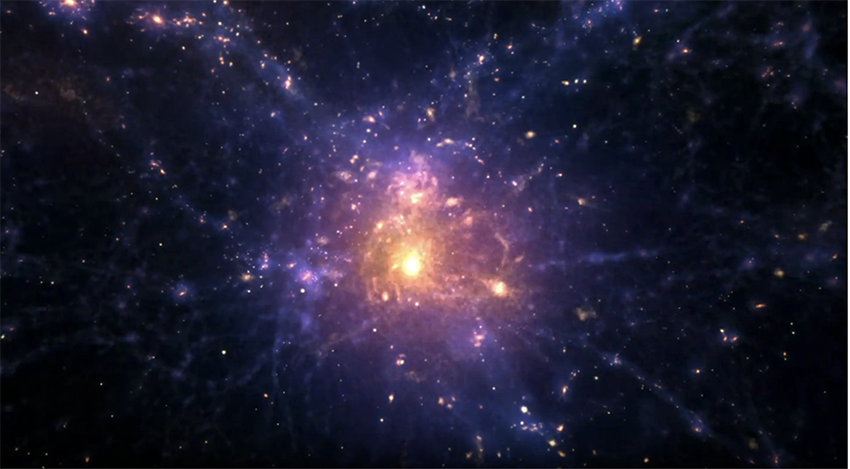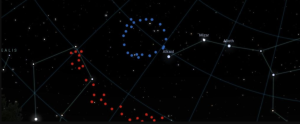
Mysterious Ring of the Universe
Astronomers have made a remarkable discovery: a colossal structure of galaxies, dubbed the “Big Ring,” situated 6.9 billion light-years away and spanning 1.3 billion light-years in diameter, forming an almost perfect ring. This structure, defying current theories of cosmic evolution, challenges the standard model of cosmology.
Dr. Alexia Lopez from Lancashire University and her team, who previously identified another enigmatic structure known as the “Great Arc” at a similar distance, assert that these two immense formations defy easy explanation within our current understanding of the universe.

According to the cosmological principle, when observed from afar, the universe should appear uniform due to the consistent action of physical laws on all matter. This principle sets an upper limit of around 1.2 billion light-years on the size of cosmic structures. However, the “Big Ring” and its counterparts surpass this limit significantly.
The unprecedented scale of these structures presents one challenge, while their implications for the universe’s evolution pose another. While the prevailing model of cosmic evolution aligns with existing observations, certain features remain challenging to reconcile.
Various alternative models have been proposed to accommodate these features. Roger Penrose’s Conformal Cyclic Cosmology, for instance, suggests a universe undergoing infinite cycles of expansion and contraction, potentially favouring the formation of ring-like structures. However, this model encounters its own compatibility issues.
Another possibility is that these structures could stem from topological imperfections in space-time, known as cosmic strands, although physical evidence remains scarce. Alternatively, they could be remnants of cosmic threads -hypothetical clusters of matter formed in the early universe- or indicative of entirely new phenomena beyond current models’ scope.
The most plausible explanation seems to revolve around Baryon Acoustic Oscillations (BAOs), which are imprints of acoustic waves from the early universe. These are fossils of acoustic waves propagating in the early universe, where density fluctuations occurred as a result of squeezes between matter and light. This led to the formation of sound waves. The sound waves emitted in the early, dense universe organised the baryons (the collection of subatomic particles, like protons and neutrons that make up solid matter) in a specific pattern. As the universe expanded and became less dense, this pattern stabilised and became more pronounced. BAOs refer to these fixed-scale density patterns.
However, the “Big Ring” diverges from typical BAOs, resembling more of a screw-like configuration rather than a spherical pattern. BAOs are spheres of fixed size with a diameter of about 1 billion light years. Detailed examination of the Big Ring shows that it is more like a screw that looks like a ring from a distance.
Individually and collectively, the enigmatic “Big Ring” and its counterparts, such as the Giant Sagittarius, present a profound cosmological mystery as scientists endeavour to unravel the intricacies of the universe and its evolution.
REFERENCES
- 1. https://www.livescience.com/space/a-big-cosmological-mystery-newfound-cosmic-corkscrew-defies-our-understanding-of-the-universe
- 2. https://newatlas.com/space/big-ring-colossal-cosmic-structure/
